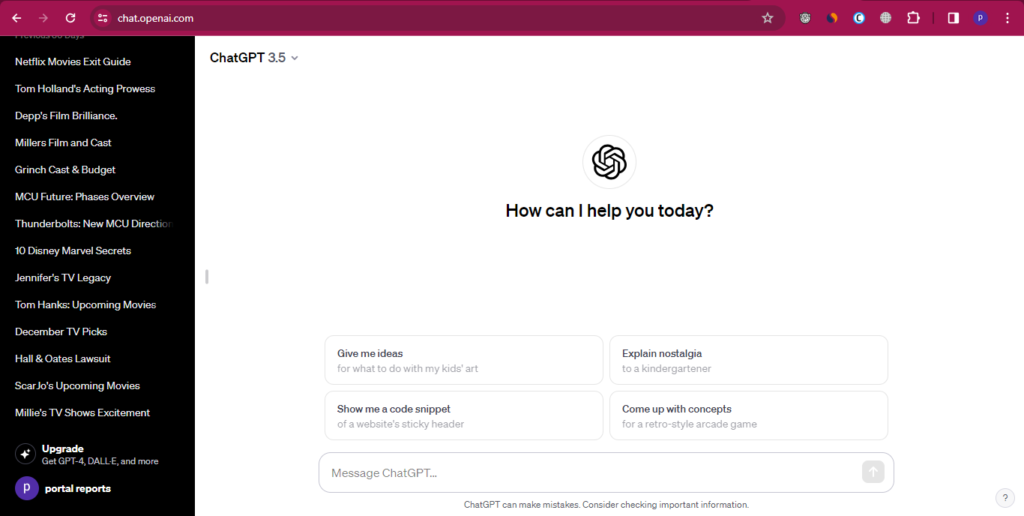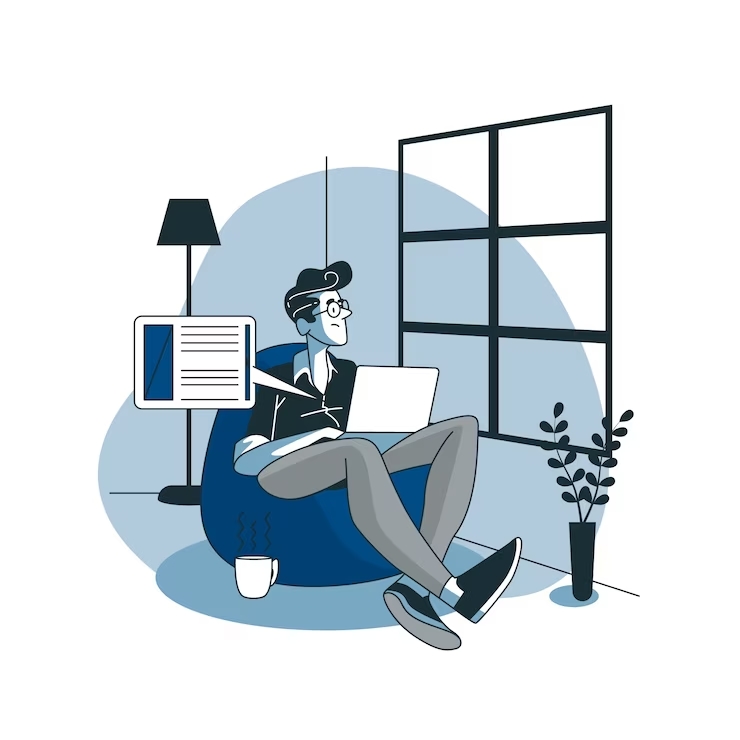Can ChatGPT Replace Copywriters?- ChatGPT, the new AI chatbot from OpenAI, has been making waves recently. Its ability to generate human-like text on a wide range of topics has led many to wonder – can ChatGPT replace professional copywriters?
In some ways, ChatGPT does seem well-suited to copywriting tasks. Give it a few prompts about your business, product or desired content, and it can rapidly generate long-form articles, social media posts, website copy, and more. The output is surprisingly coherent and polished.
However, while the AI is impressive, it does have some key limitations:
- Lack of originality – ChatGPT frequently replicates content it has been trained on rather than providing fully original takes. Overuse could potentially lead to duplication issues.
- No understanding of branding – As an AI, ChatGPT has no innate sense of what makes a brand’s voice, personality and style unique. The nuance needed to write convincingly in a brand’s voice is lacking.
- Limitations in accuracy – Without a human fact-checker, inaccuracies can make it into AI-generated copy, especially for complex or technical topics.
- Legal/ethical concerns – Passing off AI work as human-written could get businesses into legal hot water in some jurisdictions that require transparency. Ethical issues around plagiarism also remain unresolved.
While ChatGPT can be a useful writing aid, professional human copywriting that builds trust, delights readers and conveys branded personality in an original way remains irreplaceable with today’s AI capabilities. The technology still lacks creative thinking, real-world knowledge and an ability to guarantee factual accuracy or legal/ethical compliance.
For now, ChatGPT seems less likely to replace copywriters, more likely to become one tool in a copywriter’s toolkit – albeit an impressive one. The coming years will tell whether AI technology advances enough to fully match the creativity and trustworthiness of the best human writing.
How does ChatGPT work?

ChatGPT is powered by a sophisticated artificial intelligence system called a large language model that has been trained on massive amounts of text data to generate responses and content. Here is a quick overview of how it works:
Data Collection
OpenAI, the makers of ChatGPT, fed tens of billions of parameters from websites, books, articles, online conversations and other sources of text into the AI system as training data. This teaches it the nuances of human language.
Machine Learning
Using this training data set, OpenAI ran self-supervised learning algorithms – where an AI system looks for patterns by analyzing huge volumes of text, without humans labeling the data for the system. This technique enabled ChatGPT to learn about how human language and conversation flows.
Model Architecture
The model architecture behind ChatGPT is called Transformers – initially developed for translation software, now gaining traction in natural language AI. It takes in all the preceding words to better predict subsequent words for more context-aware responses.
Parameters
ChatGPT has been optimized through an enormous 175 billion machine learning parameters – letting it make extremely sophisticated relationships between words and concepts. This massive model scale contributes to how insightful and relatively error-free its generated text can be.
Dialogue Training
A technique called Reinforcement Learning from Human Feedback was used to train ChatGPT – the system was rewarded for the most helpful, harmless, consistent and high-quality responses through example conversations and fine-tuning of undesirable attributes.
So in a nutshell, by exposing AI systems like ChatGPT to vast datasets, high-performance computational power and groundbreaking model architectures, OpenAI has stepped closer to human-like language generation than ever before. Yet there remain clear gaps to bridge before Artificial General Intelligence emerges.
Also Read: How To Find and Hire Talented Blog Writers With Detailed Guide
3 ways writers are already using ChatGPT
Here are 3 ways copywriters and other writers are already using ChatGPT:
1. Getting Ideas and Inspiration
Many writers are using ChatGPT as a sounding board for coming up with ideas and angles for articles. By describing a general topic or objective, ChatGPT can provide unique takes that spark creativity. Writers build on the initial ideas with their own research, perspectives and writing style.
2. Drafting Content for Editing
Some writers are experimenting with having ChatGPT rapidly compose a first draft of simple blog posts, social media updates or website paragraphs on a given topic. While the drafts need refinement, it gives writers a head start to work from. Human creativity, finesse and fact-checking can then be applied on top.
3. Feedback on Writing
Curious writers are testing ChatGPT’s capabilities by having it scan a draft piece of writing for issues. When prompted, ChatGPT may suggest tightening up vague sections, reorganizing paragraphs for better flow or modifying tone for clarity. Writers weigh up whether the feedback seems accurate and helpful for strengthening their work before publication.
While AI-generated text still has clear limitations in fully replicating human writing abilities, clever writers are finding ChatGPT can be a versatile idea generator, drafting sidekick and writing coach if used judiciously. The key is recognizing the technology’s constraints while taking advantage of its strengths as a productivity booster. Savvy adoption of AI looks set to become part of a writer’s toolkit in the years ahead.
What does the copywriter of the future look like?

As AI writing assistants like ChatGPT become more advanced, the role of the professional copywriter will evolve – but human creativity, emotional intelligence and strategic thinking will remain vital. The copywriter of the future may look like this:
Creative Strategist
While AI can generate text, world-class copywriters will excel at understanding audiences on a deeper level to develop communications strategies that resonate emotionally and drive business results. Copywriters will rely less on writing everything themselves, becoming savvy creative strategists who conceive compelling messages and narratives.
Inventive Content Creator
Copywriters will tap into their imagination and originality to produce content ideas AI systems would struggle to match. They’ll delegate drafting basic materials to AI tools, while putting craft and polish into premium-quality writing showcasing the brand’s distinctive identity. Subject matter expertise will enable fact-checking too.
AI Whisperer
To direct AI writing assistants effectively, the copywriter of the future will need to be adept at providing the right prompts, parameters and source materials so machine-generated drafts closely match desired objectives, voice and style. Continually evaluating and tweaking AI input to enhance output quality will be an essential new skill.
Ethical Innovation Leader
As experts in communication and persuasion, future copywriters will help lead responsible innovation of emerging writing technologies, pioneering best practices that balance productivity with principles around transparency, consent, plagiarism avoidance and bias mitigation when AI is used to deliver information to the public.
So while software progresses at breakneck speed, there remains irreplaceable human value in the empathy, ethics, lateral thinking, cutting-edge creativity and cultural awareness great copywriters contribute – these traits likely make the profession future-proof. Backed up by AI capabilities, copywriters have a bright tomorrow.
Also Read: Content Writing Tips for Beginners in 2024: The Ultimate Guide to Crafting Compelling Content

